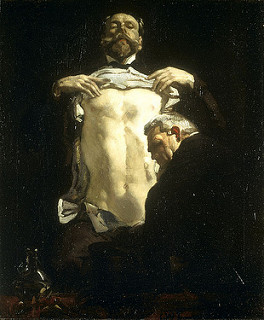A queer approach to sexual preference labelling in art-history (Queer theory and Interdisciplinary Histories): Intermezzo. Reflecting on: Callen, Anthea (2018) Looking At Men: Anatomy, Masculinity and the Modern Male Body. New Haven & London, Yale University Press
Coming across this kind of excellent scholarly work necessitates a pause and reconfiguration in one’s thinking. This ticks many boxes for me.
First, it locates queer theory in interdisciplinary historical discourses – those namely of medicine, art-education, psychosocial norms, especial of masculinity class and race, although many more art-historical narratives impinge – issues relating to the definition of image and its relation to meaning (iconographic , naturalistic, conceptual and formal-historical), proportionality & aesthetic form and formlessness, ideologically contextual as opposed to positivistic theories of the ‘ideal’, notions of self, identity and diversity, the history of discourses of sports and war and, of course, the shift to a multi-disciplinary grasp of ‘anatomy’ in the nineteenth century.
This will be a necessary struggle for me however I begin to focus in on a topic, since the nude throughout the nineteenth and twentieth century requires this grasp of different disciplines which shape its meanings. But then so does ‘queer theory’ since it depends on an awareness of the specificities of the binaries which shape gender in any culture in space and time and the means by which these binary explanations of reality are established, maintained, challenged and survive challenge. The homosocial is made up from historical disciplines which in the nineteenth century mean things like the definition of concepts like ‘professionalism’ as well as normality and ‘appropriateness’ to norms. Of course however much I focus, that focus will be on a work, works, movements or artists or an artist but these questions will remain multiple ones and require attention, or, at least, awareness.
Callen’s book tries to look at the shift from the male nude as classical ideal (and the role of the Academies therein pace Edward Lucie-Smith) to naturalist ambitions to draw a statistical norm based on a theory of body economy (and its side-kick) efficiency which animated the work of art theorists and practitioners, as well as masters of male, health and physique and, of course, theorists of eugenic improvement.
She looks at works I see as central – Bonnat’s and Caillebotte’s nudes and briefly at Cezanne’s and other ‘bather’ motifs – but never really centrally to her argument. There are however very fine readings of paintings, whose importance I had not realised or guessed (or perhaps been even remotely aware of) such as Francois Sallé’s The Anatomy Class at the Ėcole des Beaux-Arts (especially in the brilliant reading that traverses pp. 130 – 139). Here class, the homosocial, age, profession, class, sexuality, envy and desire discourses intersect each other in a way that can ONLY be admired..
Yet love this book as much as I do, it sits and stares with a Sibyl-like stare at the dangers it flirts with of a discourse that doesn’t quite add up to a single thesis, however many fascinating (established and novel) arguments it sets running. I look sometimes for more links between the excellent historical writing and research – on the modes of capturing dynamic motion in photography for instance in science and art schools (a lot to learn here) – and the main tenor of the argument. Likewise the book keeps returning thinly to the representation of women in homosocial contexts in ways that don’t seem to have space to be made solid.
On the other hand some comparisons seem profound despite being met en-passant, such as the brilliant comparison of the labouring bodies of coal carriers in Gervex and Monet, for instance (179f.), whilst other art-objects definitely needed more definition (such as Dalou’s La Fraternitie from the 10th arrondisement Marriage Hall – the most perfect kiss (p. 181) between two male nudes I have ever seen (in art or out of it). I also wanted more awareness of just how ‘queer’ (antagonistic to norms) is George Lambert’s Chesham Street (1910 - corrected. Thank you Ekaterina) on p. 123 but little is said. This is an image everyone must puzzle over.

Queer theory often liberates from intentionalism and the ‘intentionalist fallacy’ but this is not the case when Callen speaks of Etty’s Wrestlers (a painting I love (p. 87)), which to me is full of much more ambivalence about ‘racial’ categories than she allows as well as normative mid-Victorian racism.
One of the most useful bits of learning for me is the role of the flayed nude écorché model, which links my interests in Titian and de Ribera to their fate in nineteenth century anatomical models – especially in holding up a light to the importance of living over fragmented dissected bodies in anatomical knowledge.
Anyone who loves a wonderful enlightening read will love this scholarly book because it is so well written, but to me it is going to cause a lot of headaches. Writing with, and distinguishing oneself meaningfully from, such excellence will be hard work. But that’s life. Thank you, Anthea Callen, art historian, thank you!
All the best
Steve
Comments
Professor
Thanks Steve, good food for further thought. There’s always more to do. You might want to check out my book The Work of Art: Landscape Painting and Artistic Identity in 19th-century France (2015, Reaktion), especially on Courbet and Cézanne, and the Intro. My Degas book (Yale 1995) focuses on the female material, here in Looking at Men I specifically shifted my focus to the male body and the male gaze on it. All the best, AntheaThank you Professor Callen
I feel humbled by your comment. Your book has opened up so many doors for me. I will of course be checking out the rest of your work. Even where I feel challenged in my heart and soul, you express the point be considered so brilliantly and helpfully for me.
Thanks again
Steve